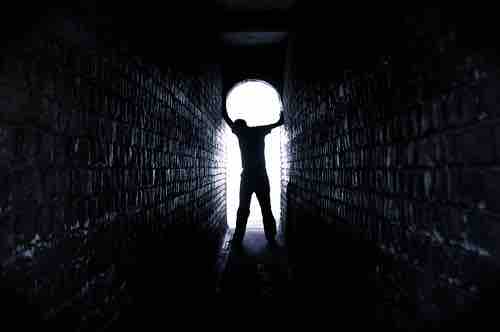Absolute Thresholds
A threshold is the minimum level at which a given event can occur. In neuroscience and psychophysics, there are several types of sensory threshold. The recognition threshold is the level at which a stimulus can not only be detected but also recognized; the differential threshold is the level at which a difference in a detected stimulus can be perceived; the terminal threshold is the level beyond which a stimulus is no longer detected. However, perhaps the most important sensory threshold is the absolute threshold, which is the smallest detectable level of a stimulus.
The absolute threshold is defined as the lowest intensity at which a stimulus can be detected. (Recently, signal detection theory has offered a more nuanced definition of absolute threshold: the lowest intensity at which a stimulus will be specified a certain percentage of the time, often 50%.) A classic example of absolute threshold is an odor test, in which a fragrance is released into an environment. The absolute threshold in that scenario would be the least amount of fragrance necessary for a subject to detect that there is an odor.
Smell is not the only sense with absolute thresholds. Imagine you're in a room and someone behind you slowly begins turning up the volume on the radio; the absolute threshold is the softest volume at which you would notice what they're doing. Sound thresholds can be about more than volume; they can also be about frequency. For example, humans cannot hear dog whistles. This is because dog whistles are at a frequency higher than the absolute threshold for frequency for human hearing.
Similarly, the minimum amount of light necessary to see something in the dark is the absolute threshold for vision. Every sense has an absolute threshold.

Light at the end of the tunnel: the absolute threshold for vision
In a dark space, an individual's saving grace can be the minimum amount of light needed to stimulate the eye in the dark environment and alert the brain that it is seeing light.
Influencing the Absolute Threshold
There are several factors that can influence the level of absolute threshold, including adaptation to the stimulus and individual motivations and expectations.
Sensory Adaptation
Sensory adaptation happens when our senses no longer perceive a stimulus because of our sensory receptor's continuous contact with it. If you've ever entered a room that has a terrible odor, but after a few minutes realized that you barely noticed it anymore, then you have experienced sensory adaptation. Like thresholds, adaptation can occur with any sense, whether it's forgetting that the radio is on while you work or not noticing that the water in the pool is cold after you've been swimming for a while.
Cognitive Processes
Additionally, an individual's motivations and expectations can also influence whether a stimulus will be detected at the absolute threshold. For example, when you are in a crowded room where a lot of conversations are taking place, you tend to focus your attention on the individual with whom you are speaking. Because you are focused on one stimulus, the absolute threshold (in this case, the minimum volume at which you can hear) is lower for that stimulus than it would have been otherwise.
Expectations can also affect the absolute threshold. If you are in a dark hallway searching for the tiny glow of a nightlight, your expectation of spotting it decreases the absolute threshold for which you will actually be able to see it.